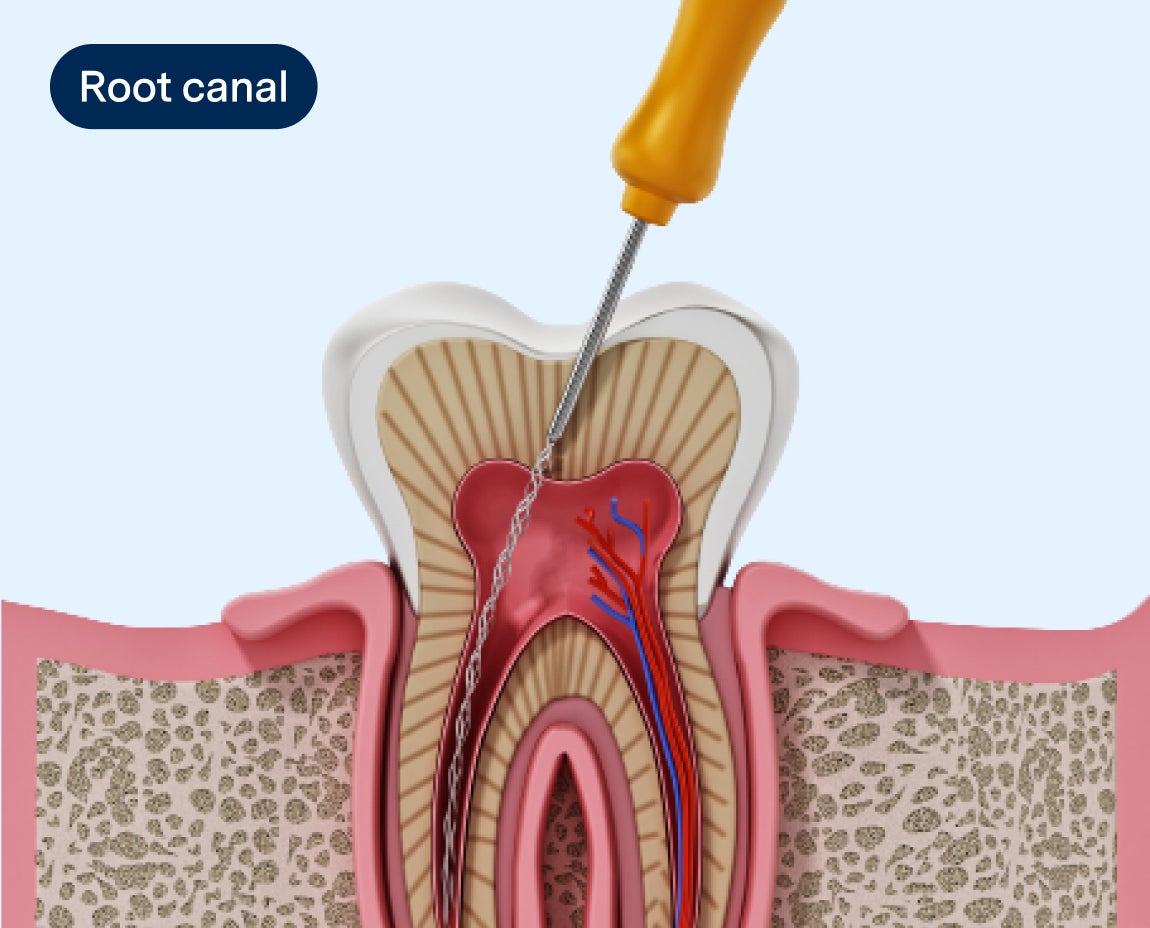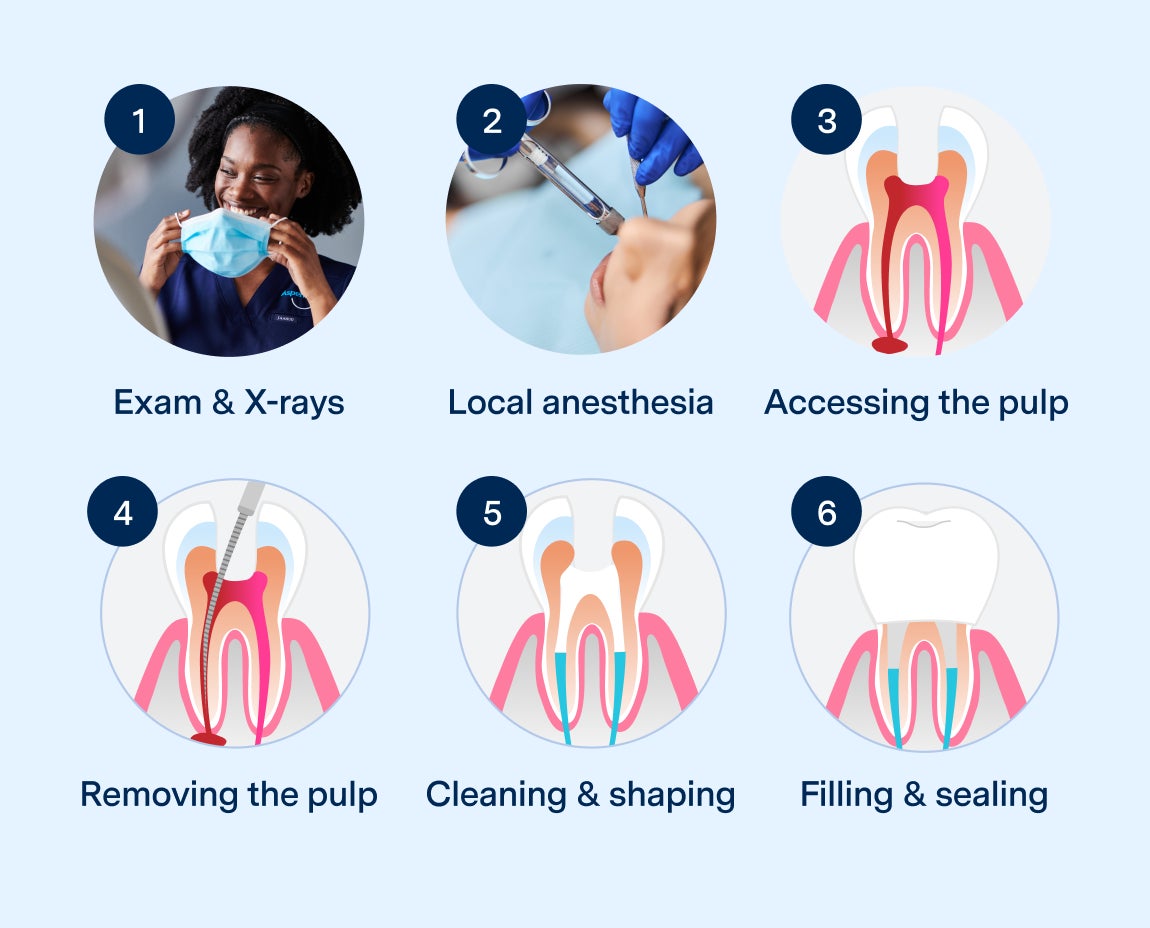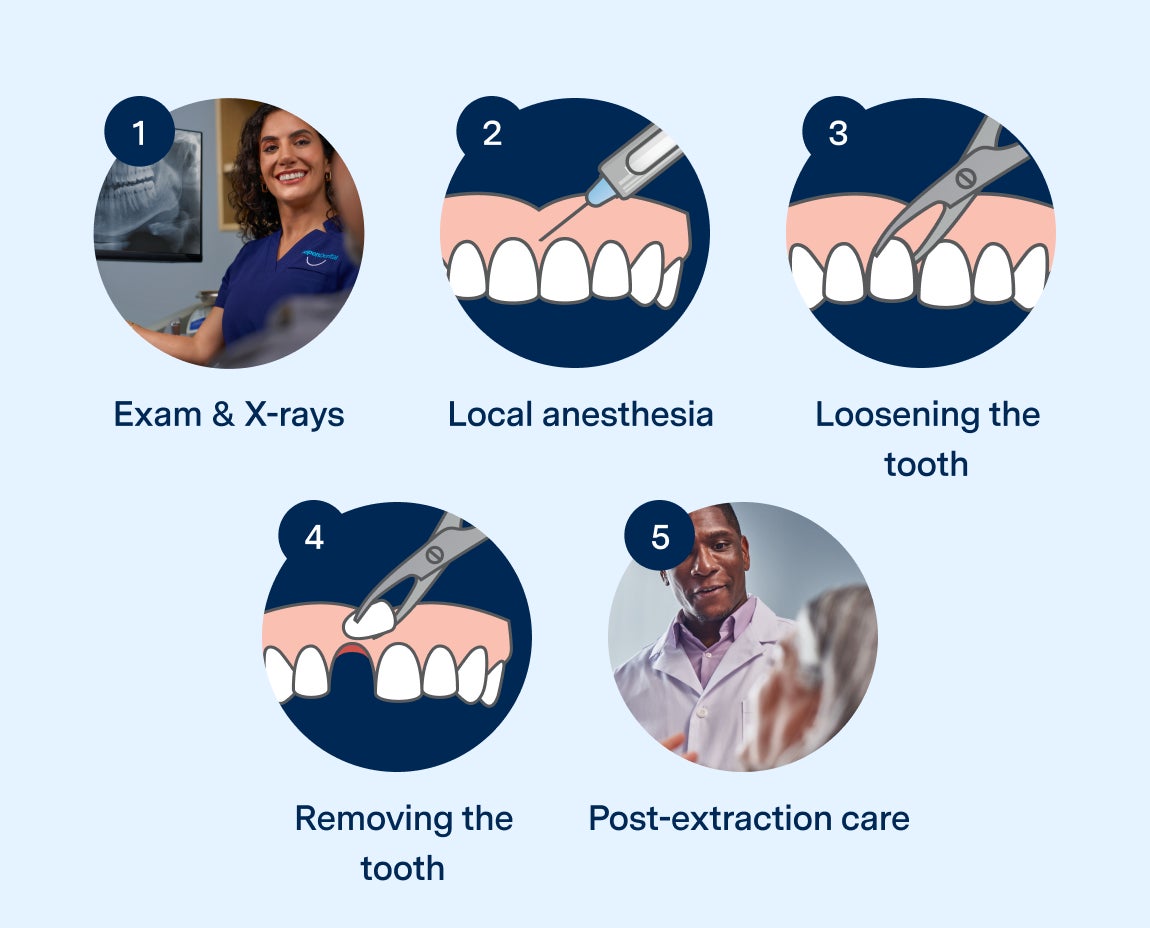Last updated 10.07.2024
Root canal vs. extraction
Understand the differences between root canals and tooth extractions, including costs, pain and recovery times.

Experiencing severe tooth pain can be overwhelming, and deciding between a root canal and a tooth extraction is not always easy. Both procedures are common and effective in treating dental issues, but understanding their differences can help you make the best choice for your oral health.
Understanding root canals
A root canal is a specialized dental procedure designed to save a tooth that has become infected or severely damaged. When the inner pulp of a tooth, which contains nerves and blood vessels, becomes compromised due to decay or injury, a root canal is often necessary to stop the infection from spreading and to preserve the tooth.

What is a root canal?
Root canals are performed to remove the infected or inflamed pulp inside a tooth. By carefully cleaning out the damaged tissue and sealing the tooth, a root canal can eliminate pain, to help prevent further infection, and maintain the tooth’s natural function. This procedure is often seen as a last effort to save a tooth from extraction.
Root canal procedure
Here’s what you can expect during a root canal procedure:
Examination and X-rays
Your dentist or endodontist will begin by examining the affected tooth and taking X-rays to determine the extent of the infection.
Local anesthesia
To ensure a comfortable experience, local anesthesia is administered to numb the area around the tooth.
Accessing the pulp
A small opening is made in the tooth to access the pulp chamber and root canals.
Removing the pulp
The infected or damaged pulp is removed using specialized instruments.
Cleaning and shaping
The empty canals are cleaned, disinfected, and shaped to prepare them for filling.
Filling & sealing the tooth
The cleaned canals are filled with a biocompatible material, usually gutta-percha, which is sealed with adhesive cement. A temporary filling is placed to close the opening. In most cases, a permanent dental crown is placed later to restore the tooth’s full function and appearance.

Understanding tooth extractions
Tooth extraction is the removal of a tooth from its socket in the bone. This procedure is typically recommended when a tooth is too damaged to be saved or when there are other dental conditions that make extraction the best option. Tooth extractions are common in cases of severe tooth decay, trauma or overcrowding in the mouth.

What are tooth extractions?
Tooth extractions involve the complete removal of a tooth from the mouth. This procedure can be straightforward (a simple extraction) or more complex (a surgical extraction), depending on the condition of the tooth. Extractions are often performed by general dentists or oral surgeons and can be necessary for maintaining overall oral health, especially when a tooth is beyond repair.
Tooth extraction procedure
The process of a tooth extraction typically includes the following steps:
Examination and X-rays
Your dentist will assess the tooth and surrounding structures to determine the best approach for extraction.
Local anesthesia
The area around the tooth is numbed with local anesthesia.
Loosening the tooth
For simple extractions, the dentist uses an elevator tool to loosen the tooth from its socket.
Removing the tooth
The tooth is gently removed using forceps. In more complex cases, such as impacted teeth, surgical extractions may involve incisions and sectioning the tooth for easier removal.
Post-extraction care
After the tooth is removed, the dentist cleans the site and places a gauze pad to control bleeding. Stitches may be used if necessary. Learn more about healing after a tooth extraction procedure here >

Root canal vs. extraction: Factors to consider
Now that you have a basic understanding of root canals and tooth extractions, it's important to compare the two procedures to see which one might be the best fit for your situation. Here are some key factors to consider:

Treatment time
Root canal
Root canals generally require one or two visits, with each appointment lasting about 60 to 90 minutes, depending on the complexity of the case.
Extraction
Tooth extractions are typically completed in a single visit. Simple extractions are quick, while surgical extractions may take longer, especially if the tooth is impacted.
Recovery time
Root canal
Recovery from a root canal is usually quick, with most patients resuming normal activities the next day. Mild discomfort or sensitivity may occur but typically subsides within a few days.
Extraction
Recovery from a tooth extraction can take longer, especially for surgical extractions. Patients are advised to rest for at least 24 hours and avoid strenuous activities for a few days. Swelling and discomfort are common but generally subside within a week.
Cost
Root canal
While cost of root canals may be more expensive upfront due to the complexity of the procedure and the need for a crown afterward, they can be cost-effective in the long term, having an 80% success rate.
Extraction
Extractions are generally less expensive than root canals. However, if the extracted tooth needs to be replaced with a dental implant, bridge, or denture, the overall cost can increase significantly. Learn more about how Aspen Dental makes tooth extractions and tooth replacement costs affordable for you >
Potential side effects
Root canal
Side effects are usually mild, including temporary sensitivity or discomfort. Root canals have a high success rate of 80%, and most treated teeth can last for many years if performed by a specialist.
Extraction
Extractions may sometimes carry a higher risk of complications, however, no treatment comes with an even higher risk. Replacing a missing tooth with an implant or bridge is often necessary to prevent further dental issues.
Which one should you choose?
Ultimately, the decision between a root canal and an extraction is determined by your dentist’s recommendation. Root canals are generally recommended when the tooth can be saved, as preserving your natural teeth is often the best option for maintaining proper oral function and appearance. Extractions are typically reserved for cases where the tooth is too damaged to be salvaged or when other dental conditions make removal the best choice.
If you're unsure which option is right for you, consulting with your dentist at Aspen Dental can provide you with the information and guidance you need to make an informed decision. Together, you can determine the best course of action to restore your oral health and maintain your smile.

Root canal vs. tooth extraction FAQs
What is cheaper, root canals or tooth extractions?
Tooth extractions and root canals both come with similar costs, because a crown, dental implant or bridge is required to restore or replace the tooth.
When are tooth extractions preferred over root canals?
Tooth extractions are preferred when a tooth is too damaged to be saved, such as in cases of severe decay, trauma, or when there is insufficient healthy tooth structure left to support a restoration. Extractions may also be recommended if a tooth is causing overcrowding or if it's a wisdom tooth that’s impacted.
Why are root canals more popular than simple tooth extractions?
Root canals are often preferred because they allow patients to possibly keep their natural teeth depending on the level of damage.
Are root canals more painful than tooth extractions?
With modern dental techniques and anesthesia, both root canals and extractions are designed to be as comfortable as possible. While you may experience some discomfort after either procedure, this can typically be managed with over-the-counter pain relievers. The pain associated with root canals is often due to the infection or damage that necessitates the procedure, and the root canal itself is meant to relieve that pain.
Your journey to a healthy smile starts with the right treatment. Whether you're facing a root canal or considering an extraction, Aspen Dental is here to guide you every step of the way.
Schedule appointment >



